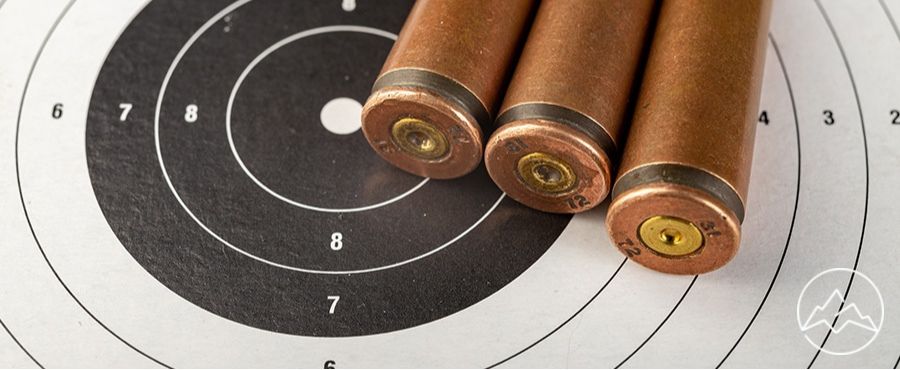Even if you’ve spent your entire life around firearms, there are things about guns and bullets that you might not know. This lack of knowledge is nothing to be embarrassed about, however, it’s never a good idea to pretend you know more than you do when guns are concerned.
For example, many gun enthusiasts have heard about the debate between rimfire vs. centerfire cartridges. Still, many don’t even know the first thing about the difference between rimfire and centerfire. In the following article, we’ll perform an in-depth evaluation of how rifle cartridges work, and the various benefits, cons, and features of centerfire vs. rimfire.
Parts of a cartridge
Rimfire and centerfire are the two main categories of primer ignition systems used in ammunition. As you might expect from their names, centerfire cartridges have their primer in the center, while rimfire cartridges have it on the wedge or “rim.” Before going into great detail about how these ignition systems differ, it’s crucial to understand all the parts of a rifle cartridge.
The primer
Also called a percussion cap, these small explosives ignite the propellant, which starts a chain reaction that causes the bullet to leave the casing and travel down the barrel. In most rifles, a mechanical hammer called the firing pin (controlled by a trigger) is what strikes the primer and starts the reaction. In the case of centerfire rifles, the hammer is in the center. In the case of rimfire, it is usually above or below the cartridge.
The propellant (fuel)
There are a variety of advanced propellants out there, each with its own benefits and features. For the sake of basic understanding, we’ll refer to the fuel in a rifle cartridge as “gunpowder.” When the hammer strikes the primer, it ignites this fuel, which causes the bullet to explode from the casing and enter the barrel.
The bullet
Manufacturers make bullets out of lead or a lead alloy. Bullets can be elongated and sharp, rounded, skinny, or fat. Bullets come in a variety of weights and diameters, which is the information factored into the bullet’s “caliber”. Many types of weapons are illegal because of their caliber or firing mechanism, or some combination of the two.
The casing
Usually made of brass, the casing is what holds the primer, propellant, and bullet in place so that it can be inserted into the rifle and fired. A big part of the rimfire vs. centerfire debate is how thick the casing can be while still allowing the cartridge to function.
Centerfire cartridges
As we mentioned, centerfire cartridges (commonly called centerfire ammo or centerfire rounds) have a round primer located in the center of the casing, directly behind the bullet, with propellant filling the space between the two. This design makes centerfire cartridges rather easy to identify, as they appear to have a large, flat, round “button” at the back of the bullet. Overall, centerfire cartridges are much more common than rimfire cartridges.
As a rimfire weapon cannot fire a centrefire cartridge and vice versa, the needs of both ammo manufacturers and shooters primarily drive the popularity of one type over the other. Among the many benefits of centerfire cartridges are their ability to be used with thicker cartridges and reused with the application of a replacement primer.
Most weapons of war, including the majority of rifles and shotguns, use centerfire designs. When it comes to hunting big game, centerfire is almost always required.
Rimfire cartridges
So, now that we’ve identified the benefits of centerfire – what is rimfire, and what benefits does the design offer?
The lack of any visible primer makes it easy to identify rimfire cartridges (also commonly called rimfire ammunition or rimfire rounds). In many cases, they are much smaller in size and fire a much less sizable bullet than their centerfire counterparts, as well. This size limit is mainly because rimfire cartridges must have much thinner casing than centerfire cartridges. This lightweight casing drastically limits the size of the bullets the rounds can support.
When shooting a rimfire rifle, the hammer hits the sides of the cartridge, bending it and igniting the internal propellant. Like all ammunition, this explosion forces the bullet to leave the casing and enter the barrel of the gun. In the case of rimfire rifles, the sound of the shot is more of a “crack” than a “boom,” and the resulting recoil is less noticeable.
As we mentioned, there are circumstances in which a shooter might want rimfire cartridges over centerfire, and these bullets are not without their benefits.
For instance, rimfire cartridges are much less expensive than centerfire cartridges, as it takes much less material to manufacture them. In general, the price difference can be as much as $.30 per round. Furthermore, these small cartridges provide less recoil, which makes them perfect for competitive shooting, target practice, and training.
On the other hand, rimfire ammunition is not reusable and must be discarded once fired. There are also problems of reliability, with rimfire having a much higher failure rate than centerfire ammunition. Furthermore, as we mentioned, it’s impossible to manufacture rimfire cartridges at high calibers, as the casing must be thin enough to be broken by the hammer.
Some of the most popular calibers that use rimfire cartridges are the .22 and the .17 – calibers seen in many sports rifles and small-game hunting weapons. Both of these calibers are much smaller than most centerfire cartridges and do much less damage to the target. Many young gun enthusiasts receive a .22 as their first firearm, and they remain in competitive use around the world.
FAQs About Rimfire vs. Centerfire Ammunition
What is the main difference between rimfire and centerfire ammunition?
How does a rimfire cartridge differ from a centerfire cartridge in terms of construction?
Is there a size limitation to either type of ammunition, and if so what are they?
Are there cost differences between rimfire and centerfire cartridges, and if so how much do they vary by typically?
What is the most common caliber used today for each type of ammo, respectively?
Rimfire vs centerfire in summary:
Though there is a big debate regarding rimfire vs. centerfire cartridges, there are clearly specific and intended differences between the two types of ammunition. Where rimfire is clearly intended for weapons used in small-game hunting, sports shooting, or target practice, centerfire cartridges are necessary for any job that requires high-caliber ammunition.



